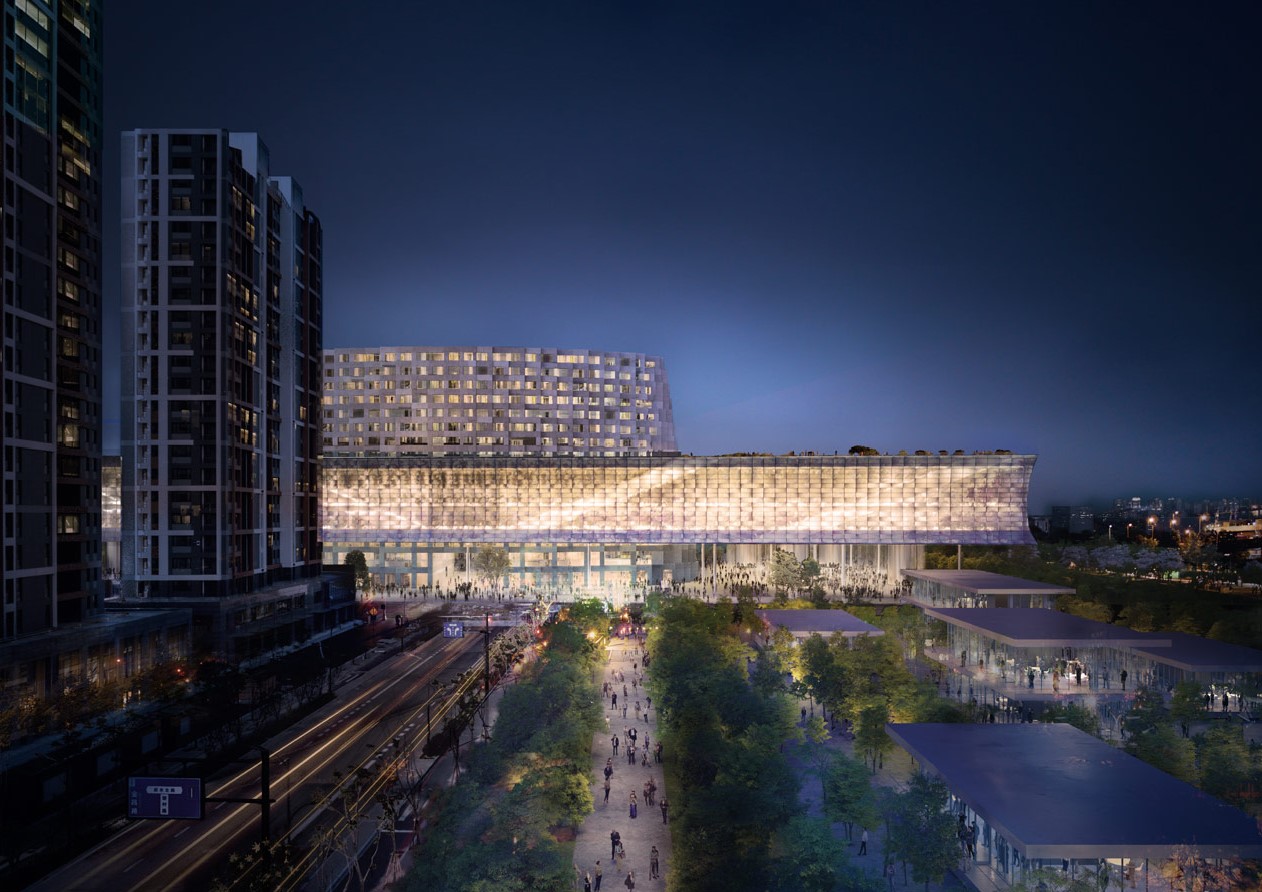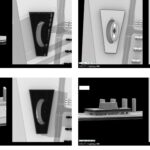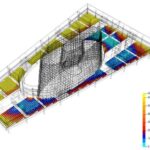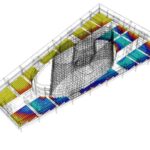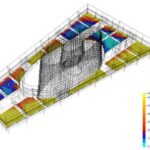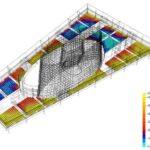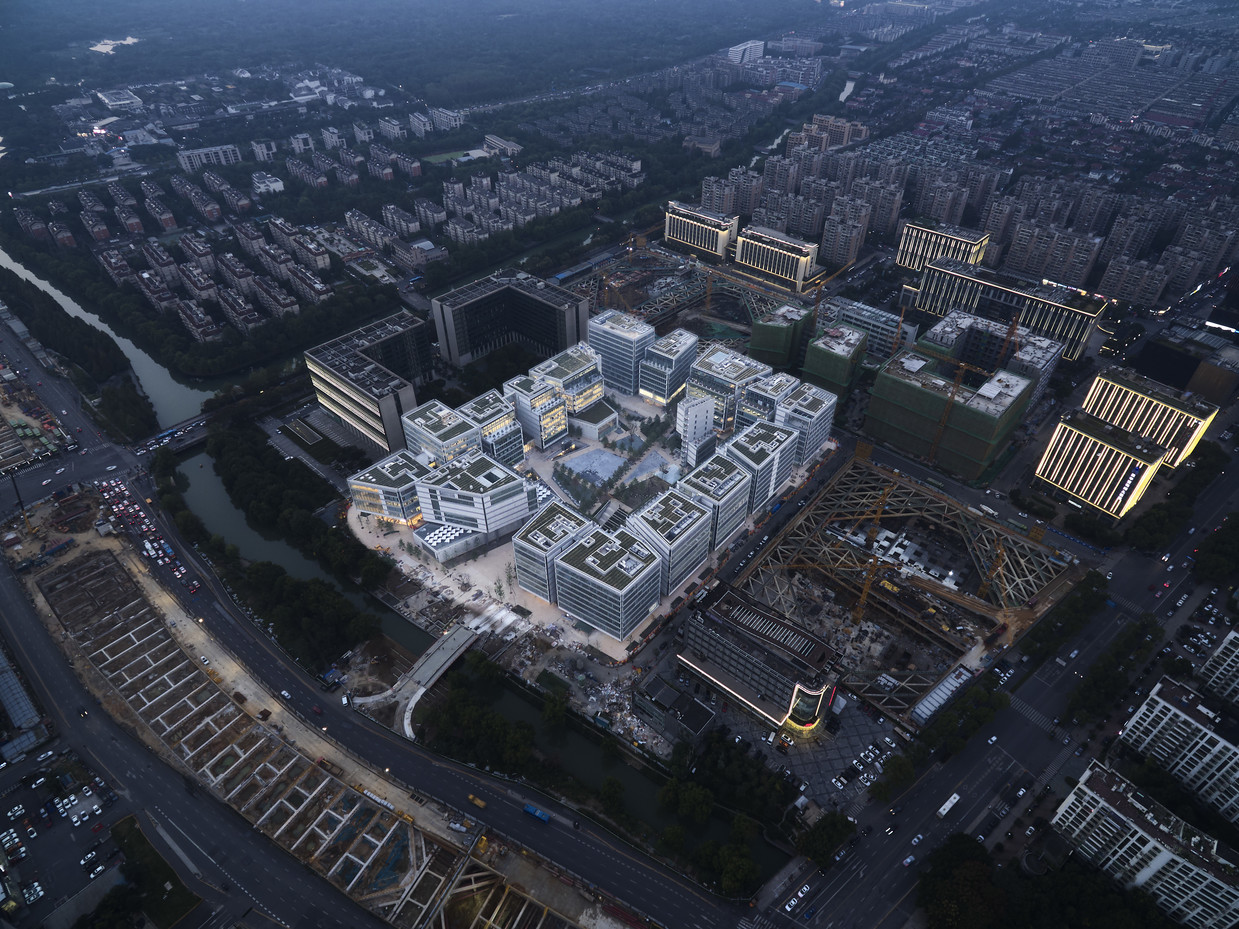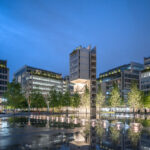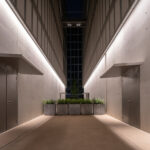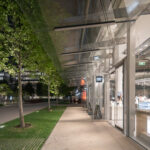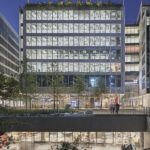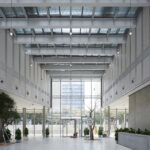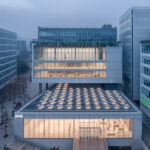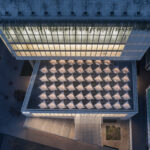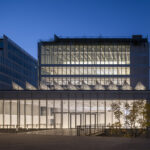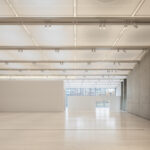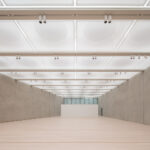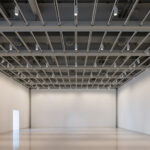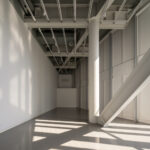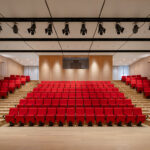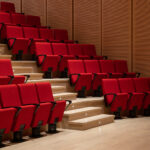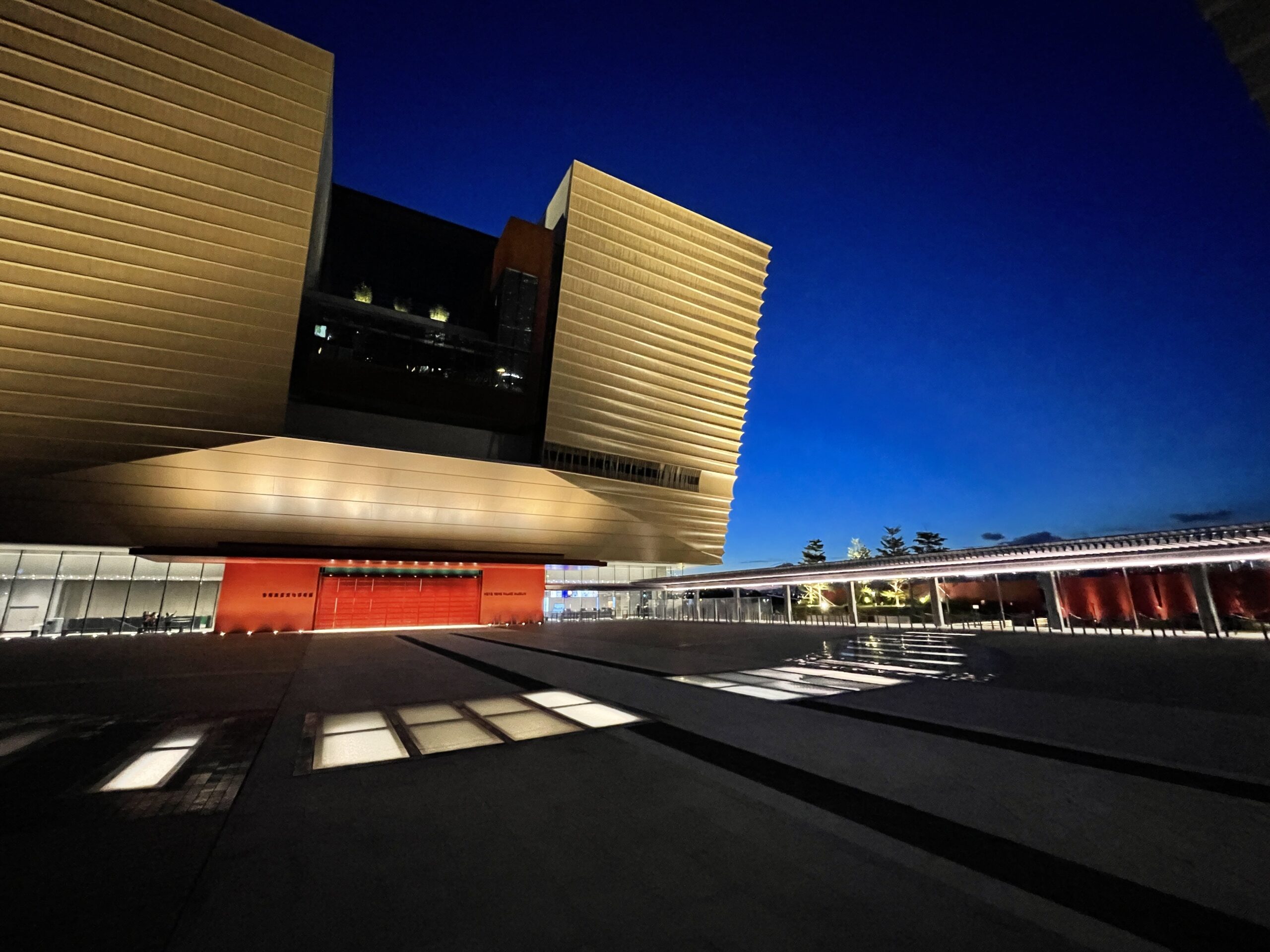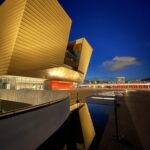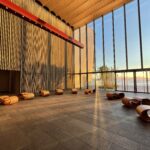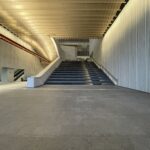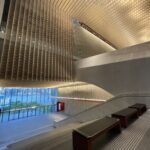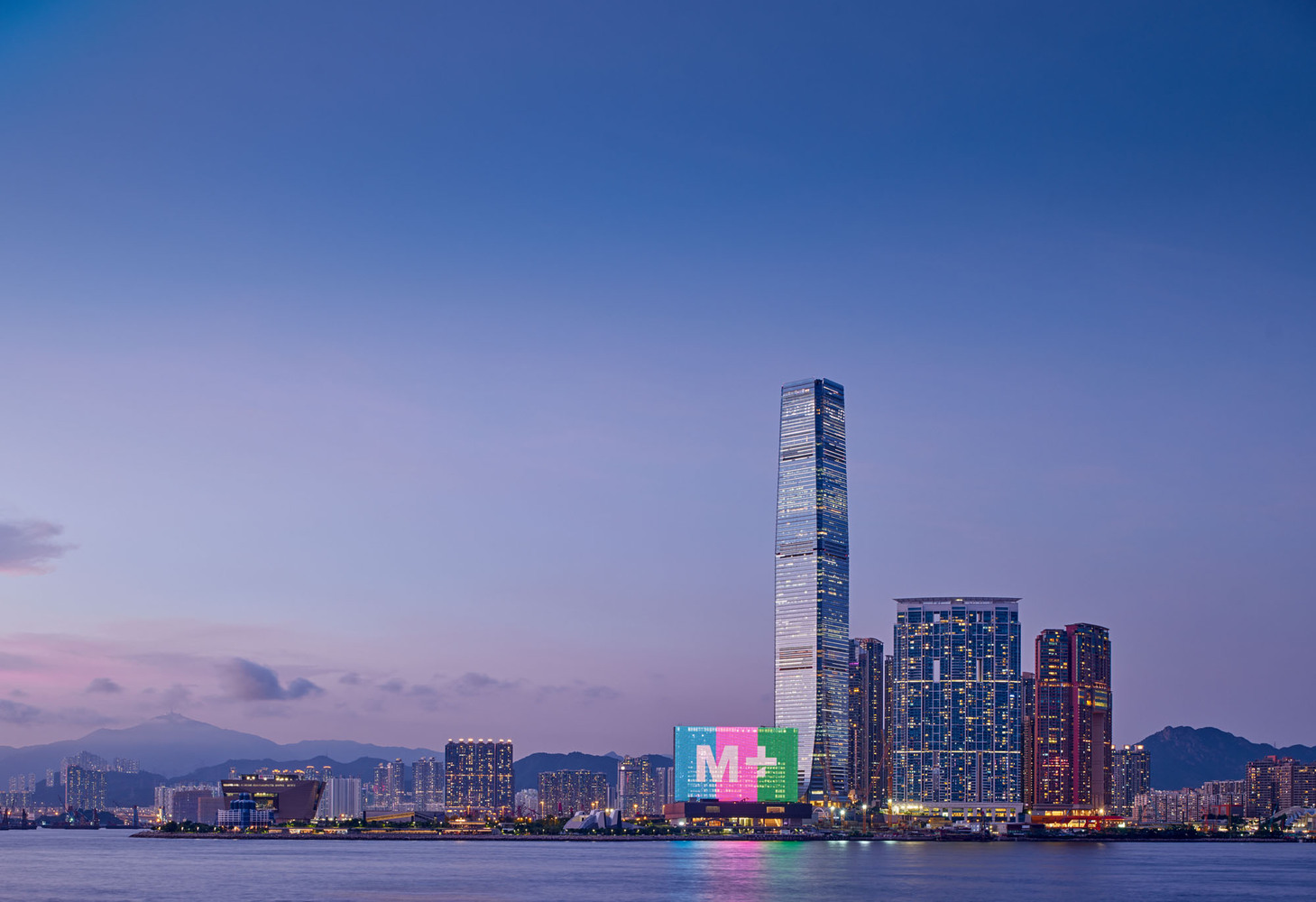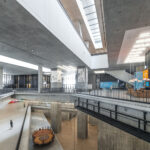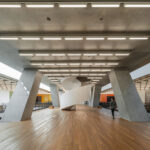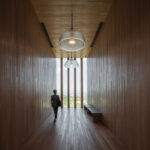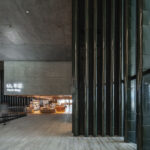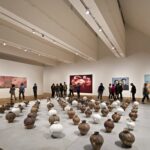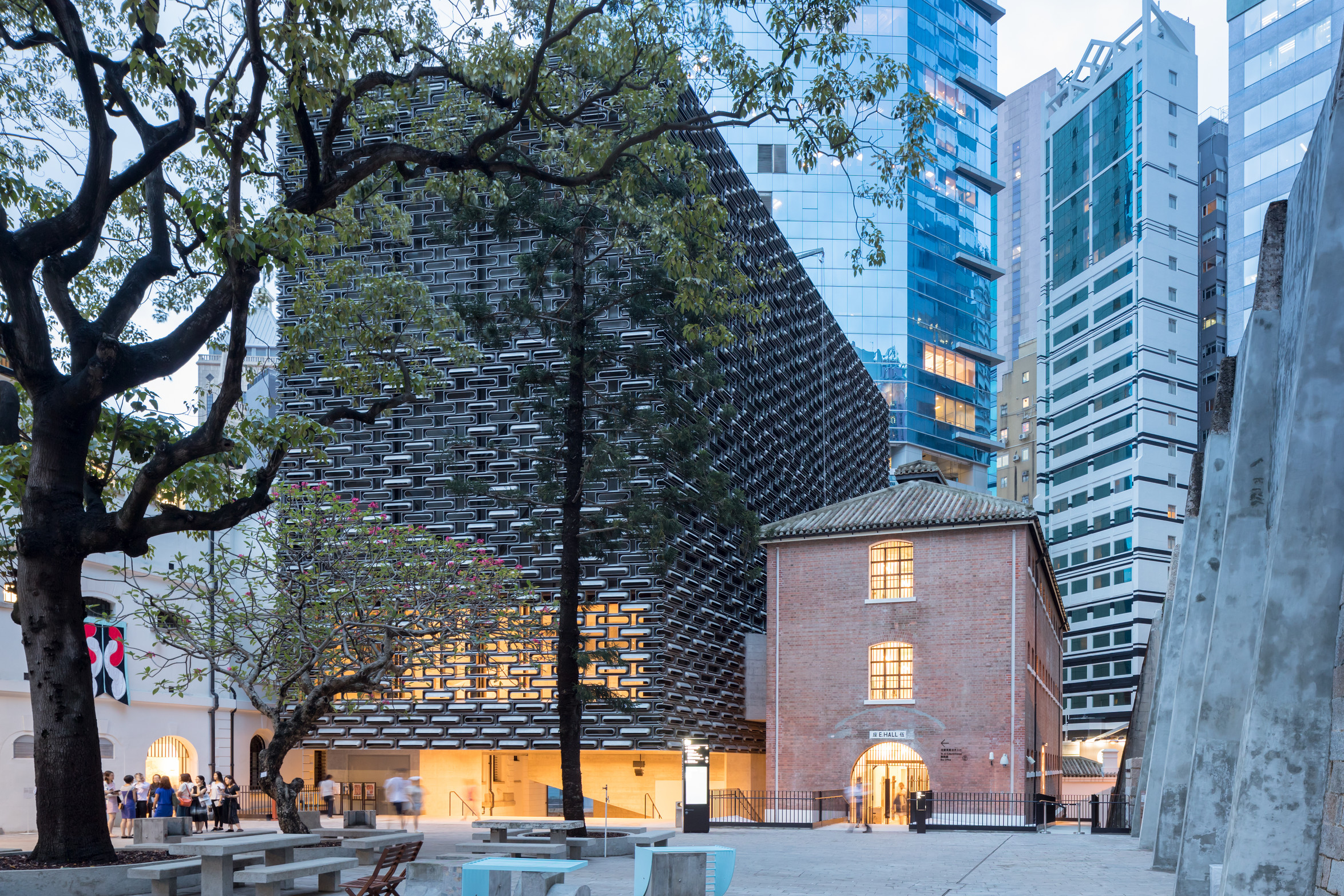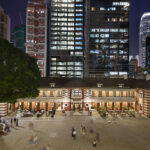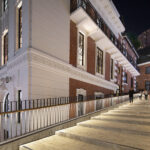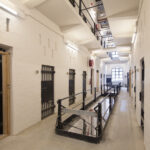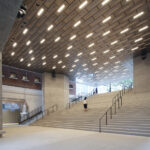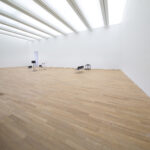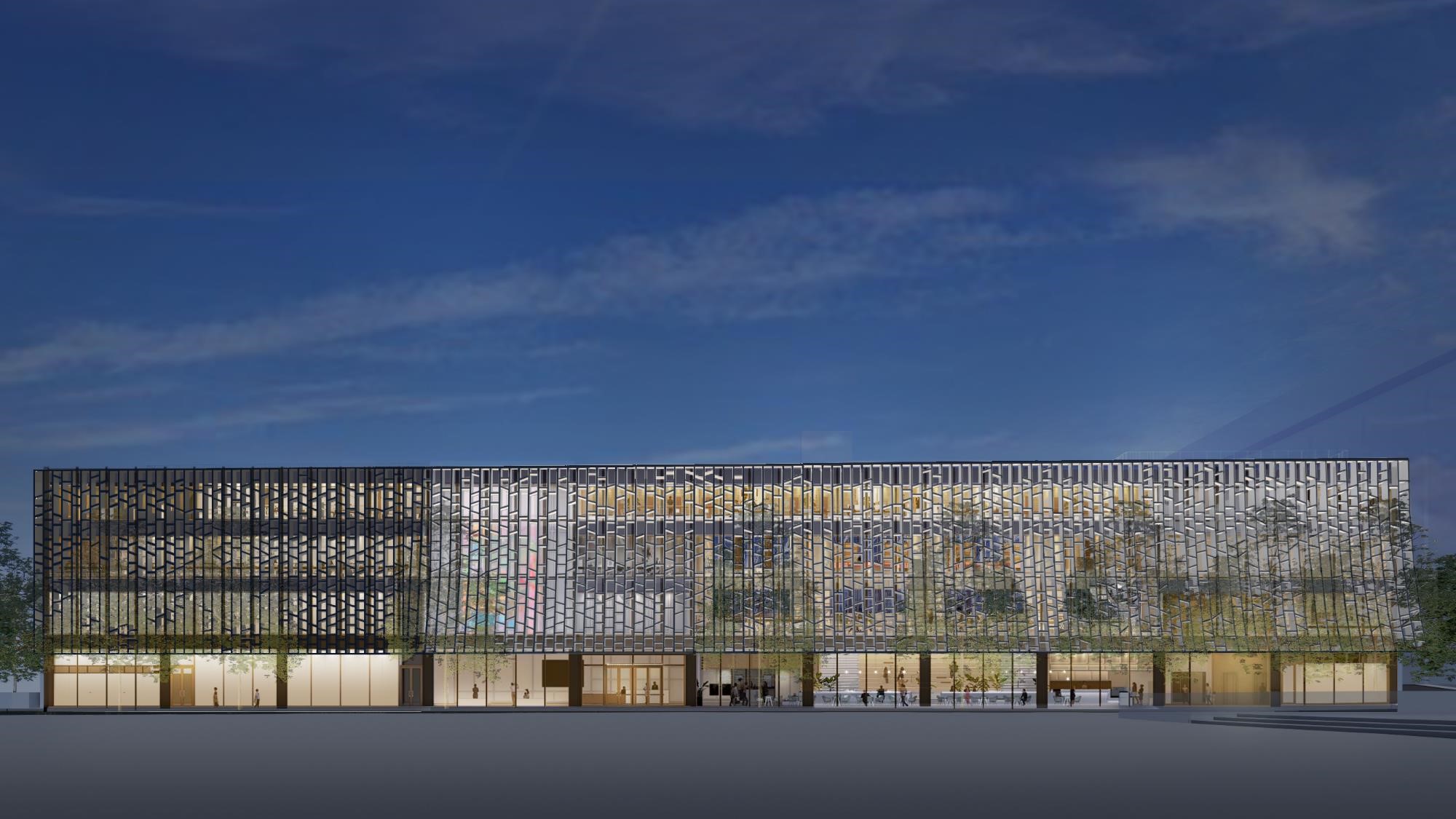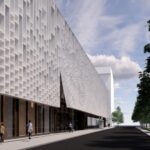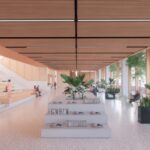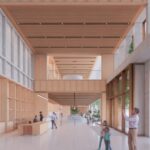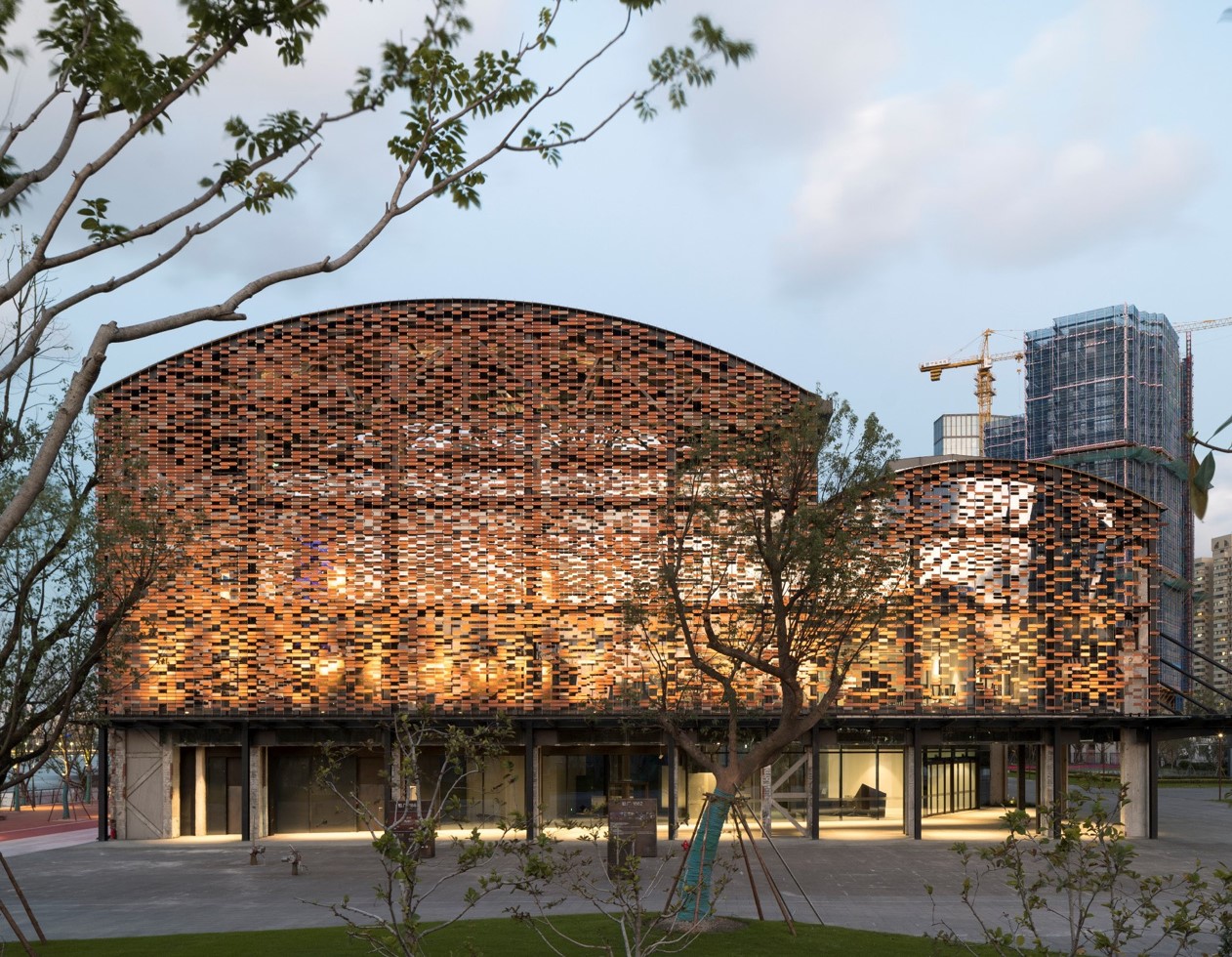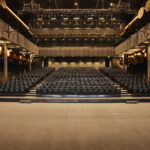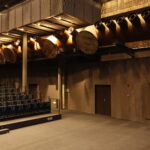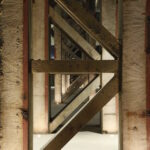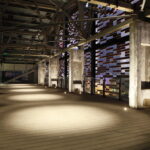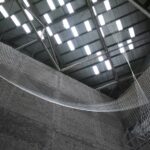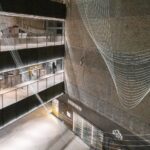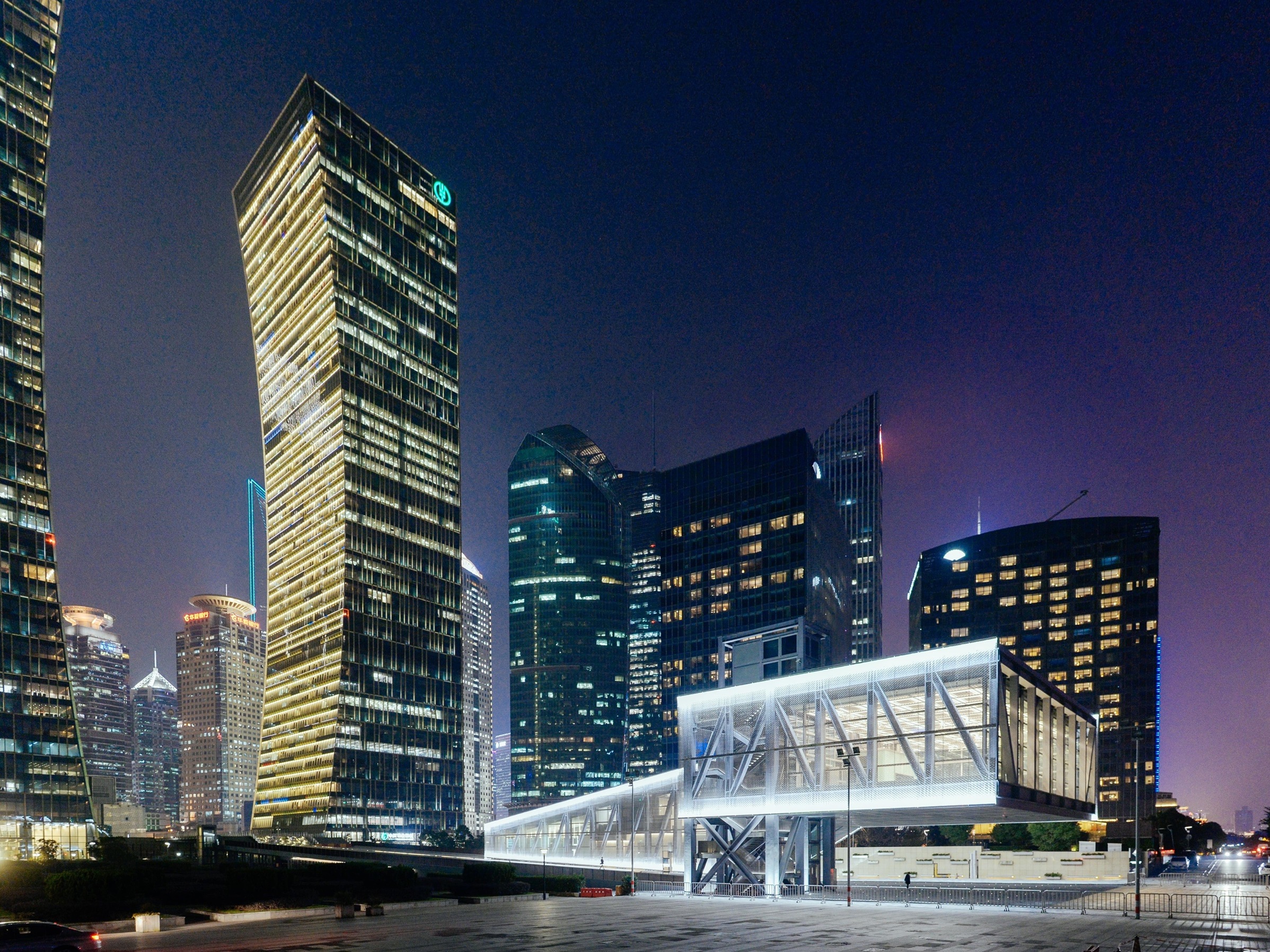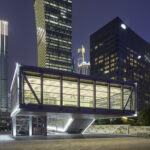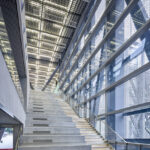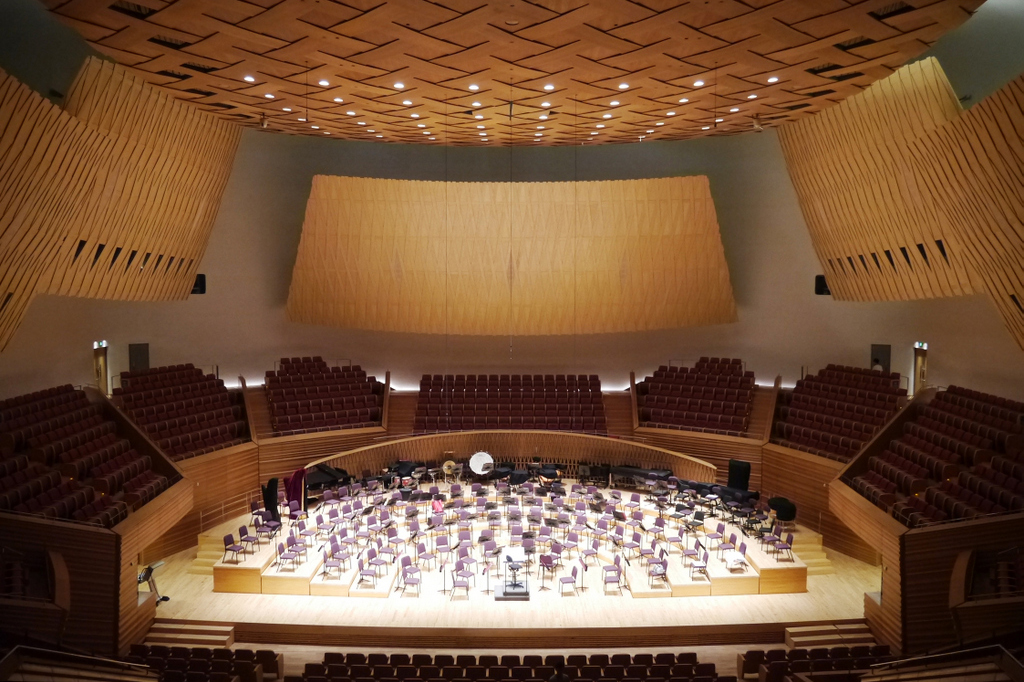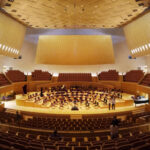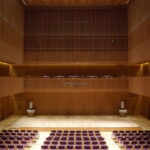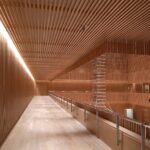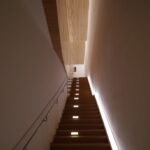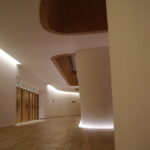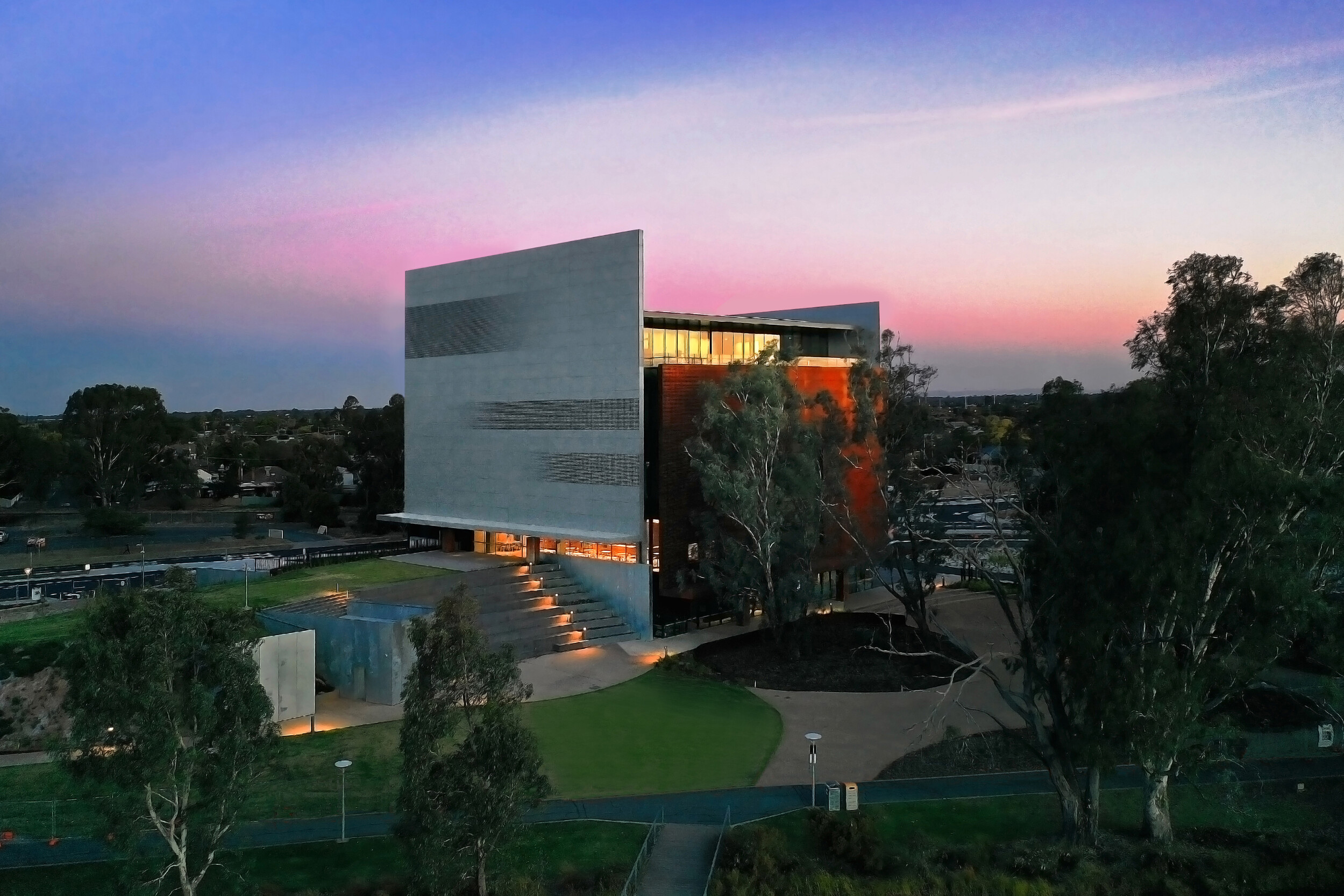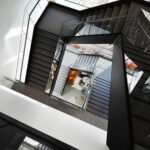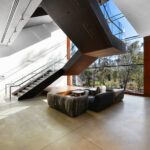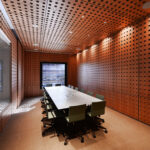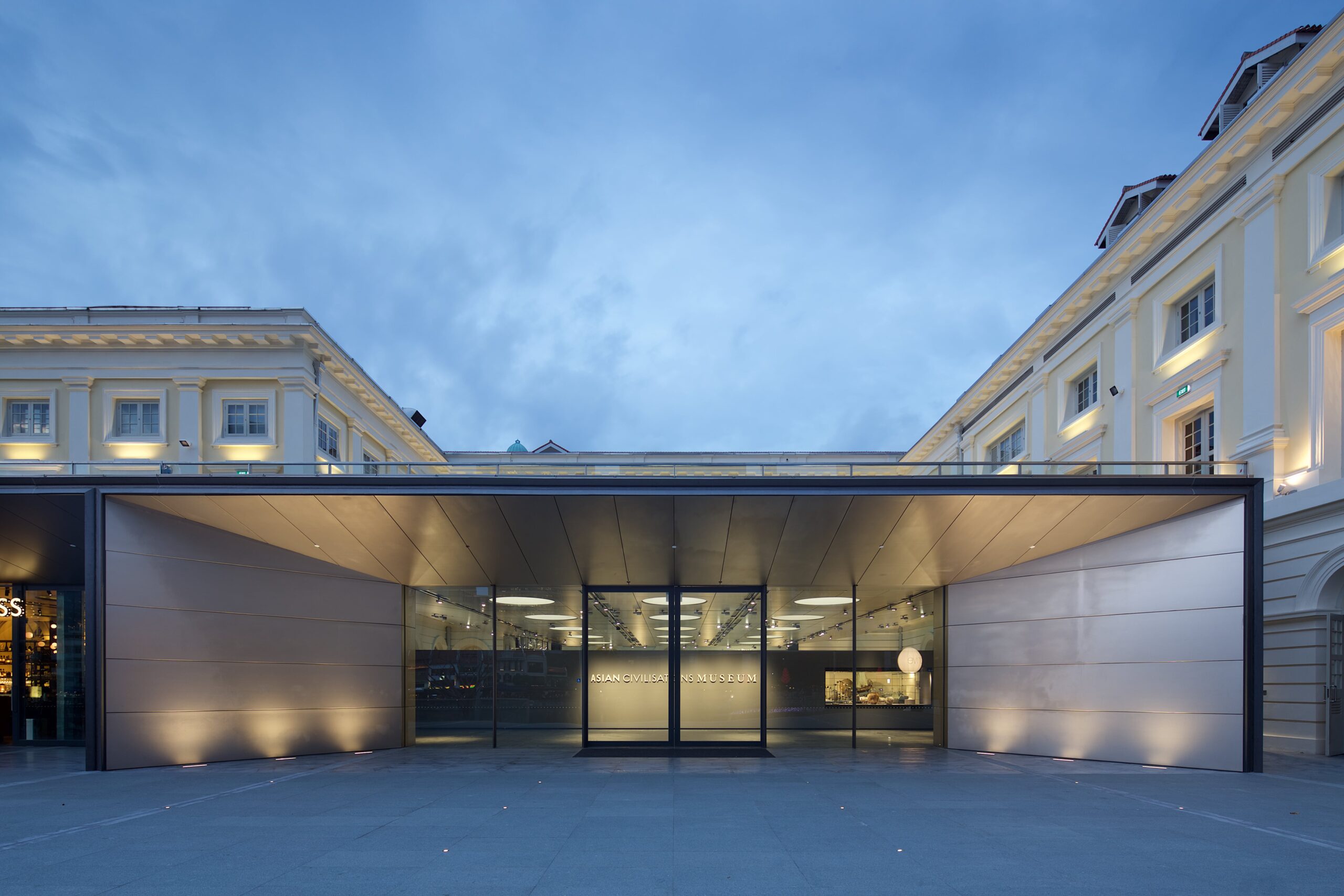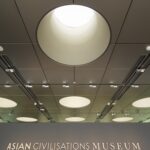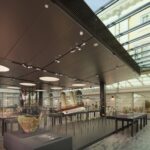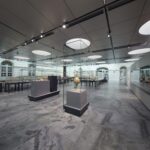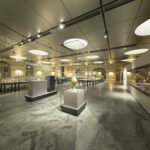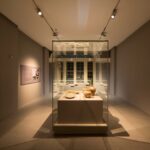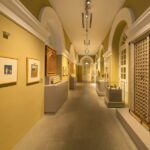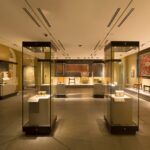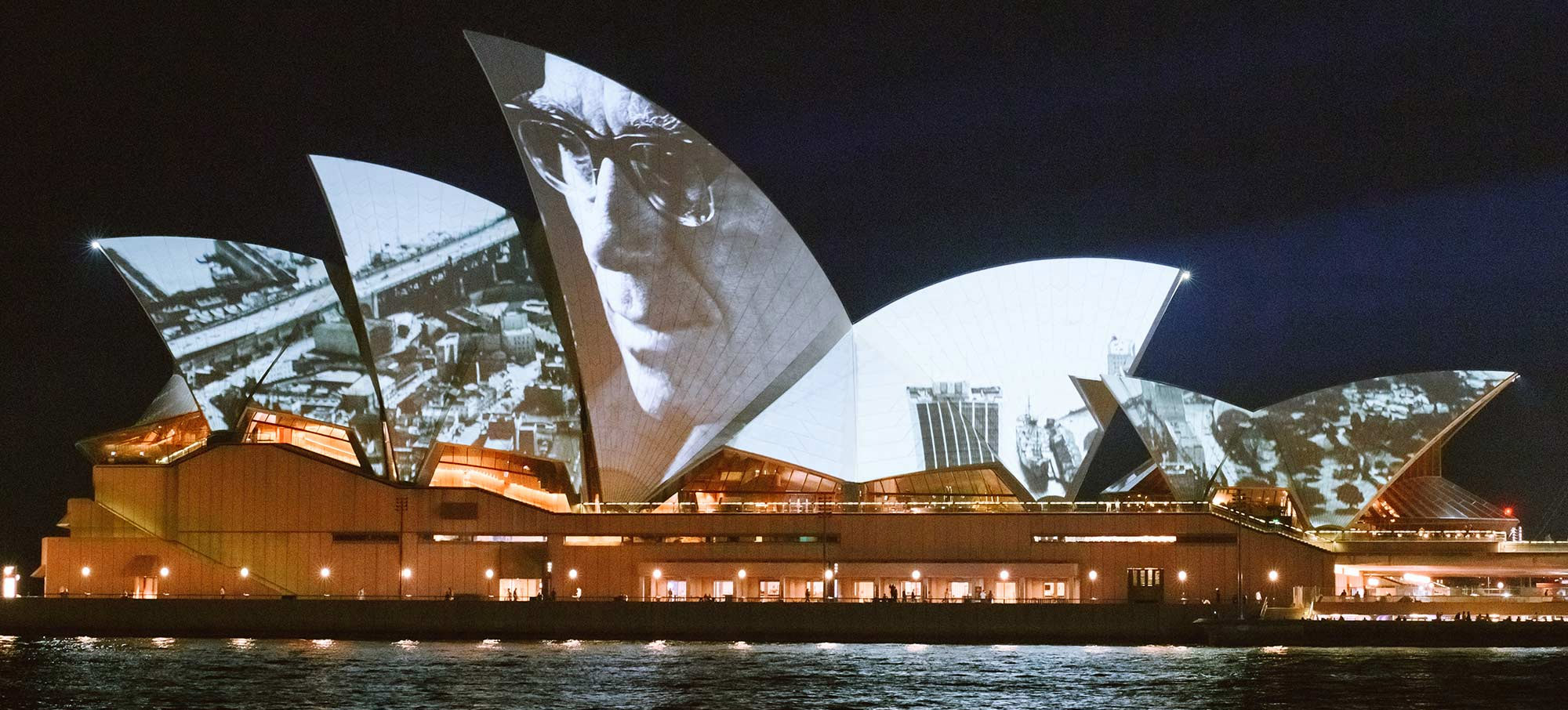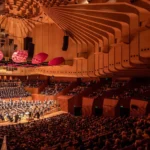Arts and culture
Selected lighting design projects
Hangzhou
Grand Canal Museum Complex, Hangzhou
Client: Hangzhou Grand Canal Comprehensive Protection Development Construction Group Co., Ltd
Architect: Herzog & de Meuron
Project status: Design completed in 2022
The Grand Canal Museum complex is located along the Beijing- Hangzhou Grand Canal. The 180,000sqm complex consists of 50,000sqm of exhibition space. A continuous vertical space connects the building’s three main functions: a conference center on the lower level, a museum in the middle, and a restaurant and hotel on top. The ground level space beneath the museum provides an open, sheltered public space for Hangzhou’s residents and visitors, while a sky garden creates a vibrant community gathering place at the upper level.
The facade of the museum is composed of large concave cast glass elements, “resembling the sparkle of rippling water and amplifying the natural beauty of the Grand Canal”, while the hotel is treated as a solid, and vertical “mountain” element. Coupled with the landscape design, the museum complex presents the Chinese ideal concept of “water in front, mountains in back, surrounded by scenery”. These three elements co-exist in harmony, creating an amazing background “canvas” for both day and night experiences.
Arup provided a range of engineering & consultancy services from concept through design development. The lighting design scope includes daylighting consultancy for the museum gallery spaces, facade lighting, landscape lighting, and interior lighting for public areas. The facade lighting is designed to enhance the two key architectural elements of “water” and “mountain”. The light is integrated with the facade glass tiles, and the interaction of glass and light produces a visual effect of movement and sparkle. The facade of the mountain is illuminated by grazing light on the structure to enhance its stepped form, balancing the overall composition of the museum.
Hangzhou
OōEli (JNBY Headquarters), Hangzhou
Client: Huizhan Technology
Architect: Renzo Piano Building Workshop, GOA
Project status: Completed in 2021
The urban complex OōEli in Hangzhou is composed of 17 buildings offering arts, retail, working and leisure space for the city of Hangzhou.
Our lighting design scope includes electrical lighting for facades, landscape and key interiors spaces, and daylighting consultancy for the museum and gallery spaces.
We designed the exterior lighting to reinforce the identity and experience of the development by night, providing an inviting and comfortable environment that services as the urban living room. The volumes of each building are accentuated by soffit uplights that create a floating effect and guide the visitors toward the central courtyard.
In the art gallery (ByArtMatters), we worked closely with RPBW to shape the daylight openings and sail- shape shadings to exclude sunlight, providing a uniformly illuminated gallery space both in the day and night-time, with accents from spotlights.
Hong Kong
Hong Kong Palace Museum
Located in the West Kowloon Cultural District, the Palace Museum focuses on the integration of traditional Chinese culture and modern architectural aesthetics. Arup partnered with renowned local architect Hsu Lee Yan Architects to create a world-class museum by combining technical expertise and design concepts.
Arup’s scope of work includes all public areas including exhibition halls, theatres, offices, studios, lobbies and other facilities, as well as exterior facade and overall landscape.
Arup provides comprehensive consulting services of lighting design, acoustic design, audio-visual design and theatre planning for the Palace Museum project.
Hong Kong
M+, Hong Kong
Client: West Kowloon Cultural District Authority
Architect: Herzog & De Meuron, Terry Farrell & Partners Ltd
Project status: Opened in 2021
M+ is a cultural centre for the 20th and 21st century art, design, architecture and moving image in West Kowloon Cultural District, Hong Kong.
Working with the renowned architecture practice Herzog & De Meuron, Arup applied our technical expertise to create a world- class museum.During the design process, our multi-disciplinary team collaborated closely to optimize the design to meet the aesthetic and functional requirements for each of the spaces.
Arup’s holistic specialist consultancy services for the M+ museum included lighting, acoustic, audiovisual an theatre planning consultancy. The lighting design scope covered interior lighting for all public areas such as the gallery, theatre, cinema, office, studios, lobby and other facilities, as well as the exterior lighting for the media facade and landscape.
Hong Kong
Tai Kwun, Hong Kong
The project is Hong Kong’s largest historic building revitalisation project, transforming the 170-year-old city gem into a new cultural landmark over a span of 10 years.
The project covers the conservation of 16 historic buildings on a site comprising three declared monuments (former Central Police Station, Central Magistracy and Victoria Prison) and the addition of two iconic new buildings and a footbridge, merging the old Chinese and British designs with the new modern buildings in unique and subtle ways.
The lighting scope includes daylighting for the new building, and facade, landscape and interior lighting for all buildings. Our design creates a harmonious atmosphere, balancing minimizing impact to heritage buildings with requirements of the new functions. Design consideration also include artwork conservation and creating a visually comfortable and welcoming urban courtyard.
Macau
New Macau Central Library
The new Macau Central Library is situated by the Tap Seac Square in the historical centre of Macau, a UNESCO World Heritage Site. It is located on the site of the former Hotel Estoril.
The architectural design creates a journey through the library, with lighting guiding users upwards and allowing them to experience different spatial areas. The library features an open façade, enabling visitors to enjoy the spectacular view of Tap Seac Square.
The façade pattern serves as an extension of the bookshelves. From the inside out, the skin wraps the library volume and opens up like a book page to the main entrance facing the Tap Seac Square. This welcoming gesture is an essential part of the relationship between the library and the square. The pattern also allows a play of light and shadow inside the library, providing a subtle dynamic change of scene throughout the day. The façade lighting further highlights the open book at night, emphasising the façade skin.
Shanghai
MIFA 1862
Client: CSSC Complex Property Co Ltd
Architect: Kengo Kuma & Associates
Project status: Completed in 2016
Located by the Huangpu River, MIFA1862 is was restored from an old ship engine factory to an urban art and culture landmark.
After dark, the facade lighting for the north & east elevations appeal towards the riverside. The lighting concept creates a pattern reminiscent of river, reflecting the light in a range of golden colours at sunset. Accent lighting is used to emphasise historical facade elements such as the preserved chimney and water tank.
We designed the interior lighting using warm and cool colour temperatures to contrast between the old and new elements, and lower light levels to enhance the visual sensitivity of visitors in order to express the textures of the materials. This results in a dramatic, nostalgic impression that truly reflects the historical character of the architecture.
Awards & recognition:
- 2017 China Illuminating Engineering Society (CIES): Interior Lighting Design 3rd prize
Shanghai
Lujiazui Exhibition Center
Client: CSSC Complex Property Co Ltd
Architect: OMA
Project status: Completed in 2016
Located by the Huangpu River, the Lujizui Exhibition center serves as an exhibition centre for the Shipyard developments in Lujiazui. The building is lifted towards the riverfront, and its sloped form creates a unique landscape in the central plaza.
After dark, the facade lighting continues to reinforce its architectural form by illuminating the 3D-mesh that covers the building envelope. We worked closely with our facades team and created a custom detail that accomplished a consistent lighting effect along the sloped surfaces while working within the client’s budget. Interior lighting seen through the mesh / glass facade also enhances a sense of transparency, producing unique layers of light as well as transforming the building appearance from day to night.
Awards & recognition:
- 2017 IES Illumination Awards: Award of Merit
- 2017 China Illuminating Engineering Society (CIES): Interior Lighting Design 3rd prize
Shanghai
Shanghai Symphony Hall
Arup’s Lighting team in Shanghai has been appointed to work on the architectural lighting design of Shanghai Symphony Hall. Designed by Japanese architects, Arata Isozaki & Associates, the project aims to be a world-class concert hall in China adopting the latest acoustic engineering with the arena-style stage design.
The project consists of 1200-seat main concert hall, 400-seat hall, entrance hall, and foyer spaces which interconnect the three halls in the 4-storey basement. Our lighting scope includes architectural lighting for all the public areas of interior and exterior, including the façade lighting.
To support the architects and their design goals, extensive lighting analysis were made for the main concert hall. The main hall adopts acoustic timber panels for ceiling and walls, which ‘float’ in front of the three- dimensionally curved outer skin. All the luminaires for the architectural lighting as well as stage lighting are integrated within the acoustic panels to avoid the visual clutter in space.
The buildings are already topping out of the ground under construction, and it is planned to hold an opening concert for the Chinese New Year in 2014.
Shepparton
Shepparton Art Museum
The Museum’s cube like form, with striking 30-metre-high facades with metallic finish, is a powerful concept.
The sculptural form with strong angles and large flat façade plates is a highly adaptable, functional and efficient design. It is also the first museum/art gallery in Australia to achieve a 6 Star Green Star – Design & As Built v1.2 certification from the GBCA.
Working with natural light was integral to the lighting design – through modelling sunlight penetration, our lighting team were able to reduce ultraviolet exposure and lessen the risk of damage to artwork. Our crafted acoustic design was vital to fulfilling the project vision of providing a world class art gallery and multi-function community space
Singapore
Asian Civilisations Museum Expansion
Client: Asian Civilisations Museum
Architect: Greenhilli Architects
Project status: Completed in 2018
Using a holistic design approach, Arup Lighting have harnessed the use of daylighting in gallery spaces as a dramatic design element and a factor in conservation as well as in energy efficiency.
Lighting fixtures are concealed into architecture elements to ensure seamless integration. In the courtyard gallery, daylighting was a driving tool in the design process. During the day, light is filtered through the hyperboloid feature skylight to illuminate the gallery without any need for artificial lighting. At night, the lighting integrated within the feature skylight is turned on to provide an even, diffuse glow to ensure galleries are lit without glare.
Awards & recognition:
- 2018 IES Illumination Awards: Award of Merit
Sydney
Sydney Opera House
With its shimmering sails, this exhilarating building has come to define its city and even the nation of Australia.
One of the world’s iconic buildings, the Sydney Opera House is an astonishing engineering and architectural feat. from its prominent position on Bennelong point, architect Jørn Utzon’s magnificent vision gracefully adorns Sydney Harbour.
Our founder, Ove Arup, was engaged early in the design and began to turn a daring concept into a physical reality, confronting an engineering challenge that has since become one of the profession’s epic tales.
The Opera House opened in 1973, and since then, Arup has continued to partner with its custodians in the care and maintenance of this extraordinary building.

